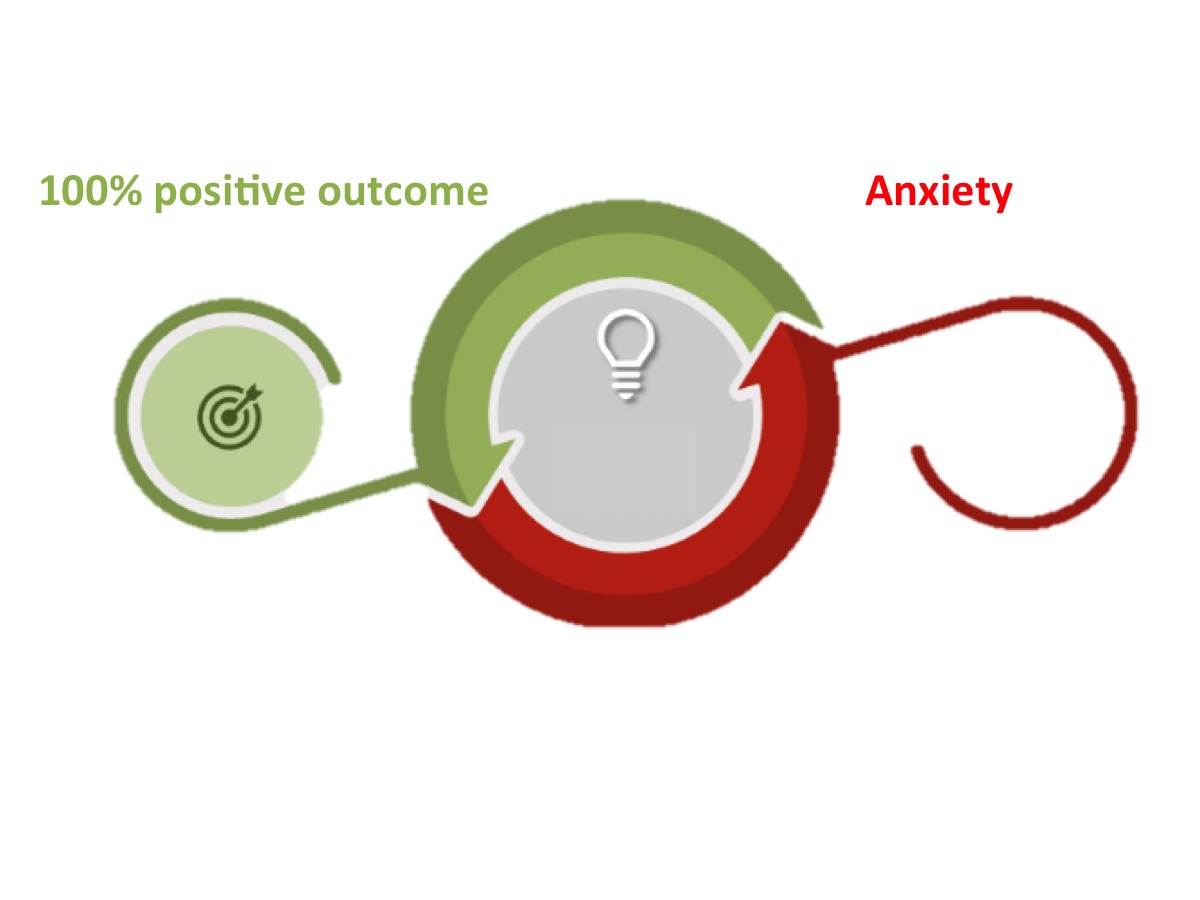Anxiety is a warning from your unconscious mind that you’re focusing on the things you don’t want to have happen (according to Dr. Tad James). Often, you’re running a programme in your head where worse case scenarios unfold. To be aware of this warning is very useful, as we shall see.
The triggers of anxiety could stem from a variety of sources, from specific events, situations, memories, health issues, medications, stress, conflicts (internal or with someone else) and even caffeine. Anxiety attacks can also have no known trigger. In these cases, the anxiety has become a habit.
The unconscious mind forms habits quickly, yet does not judge whether the habit is good or bad for us. Think about whether your anxiety is situational or dependent on a time of day or part of the week.
In any case, anxiety is a fear of the future. When you’re anxious, your mind is concentrating on future events, that future could be 10 seconds away or 10 months away. Your mind has forgotten to be in the present moment and has journeyed into the future, making you a time traveller! That’s not necessarily a bad thing, what’s making you so uncomfortable is having the future pan out in a negative way. If you purposefully imagine the future with positive thoughts, the anxiety will recede.
The 3 keys to understanding and releasing yourself from anxiety are
1.Be aware of your feelings, acknowledge them. If you try to hide them, ignore them or bury them in a safe in your mind, the unconscious mind may have to amplify your feelings, to get your attention. The unconscious mind also controls the physical body and may give you physical symptoms to signal to you that your thinking needs adjustment.
How then, do you acknowledge them? As you feel anxious, make a conscious effort to recognise what you were thinking about. Your mind will have time travelled to a version of the future. Consider where your mind took you and what you were thinking.
2. When you time travelled, the anxiety was manifested by considering the negative outcome. The anxiety is a warning that your thoughts are off beam, unhelpful and unhealthy. You unconscious is trying to get you to notice this! For most people, however, they direct their attention to the anxious feelings, rather than what they were thinking.
Permit yourself to see a positive outcome instead. This can be a challenge, but persevere. Now that you know what you were thinking about, even if details are missing, imagine the future event as 100% successful.
Again, this may prove challenging, as with all new habits, it may take a little while to be able to do this effortlessly. You need to imagine 100% success, not 95% or 99%, but 100%
If you meet resistance, tell yourself that this is only in you imagination, it’s not real. In your imagination, you can be, do or have anything. So, now simply imagine 100% success. Work on it and the anxiety level will drop.
You may need to repeat often, until this new habit is installed.
3. When you know that anxiety is a fear of the future, brought on by expecting or anticipating the worst, you will want to make use of the logic of step 2 above. There is a mutually exclusive relationship between anxiety and imagining the 100% best-case scenario.
It’s almost like a see-saw, with anxiety on one end and 100% positive outcomes on the other.
If you have 100% positive outcome in the air, then anxiety is down. Allow the positive outcome end to sink and anxiety can lift off the ground.

Once you understand this little technique, the mind releases the anxiety, as there is no reason to be anxious about something you imagine to be 100% successful.
Living with anxiety can be very difficult. This technique is one of many, look out for others here https://www.mind.org.uk/information-support/types-of-mental-health-problems/anxiety-and-panic-attacks/self-care-for-anxiety/
If you’d like to know how Time Line Therapy® could help, see https://www.traceycolenlp.com/just-what-is-time-line-therapy/


